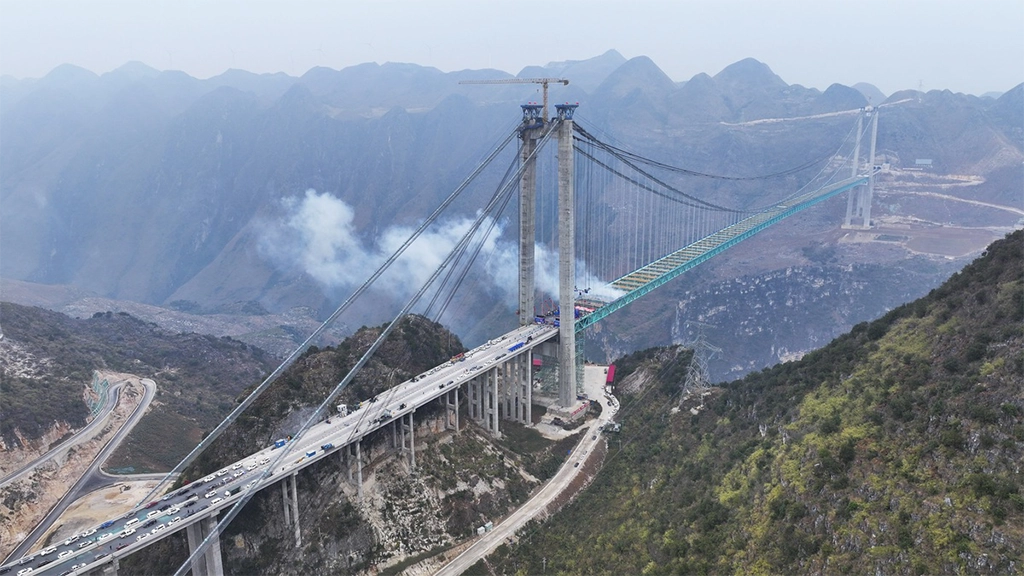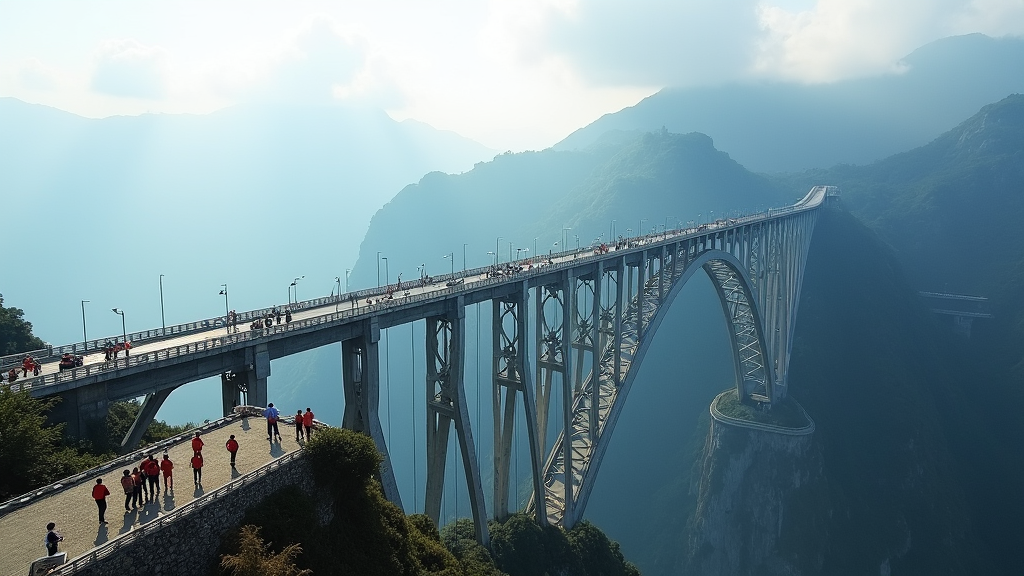World’s Tallest Huajiang Bridge to Open in China 2025
World’s Tallest Huajiang Bridge to Open in China 2025
In the heart of China’s Guizhou province, a monumental feat of engineering is nearing completion. The Huajiang Grand Canyon Bridge, poised to become the world’s tallest bridge, is set to open in June 2025. Spanning the Beipan River, this suspension bridge not only exemplifies China’s infrastructural prowess but also promises to transform regional connectivity and tourism.
Engineering Marvel in the Mountains
The Huajiang Grand Canyon Bridge stands as a testament to modern engineering, soaring 625 meters above the canyon floor—surpassing France’s Millau Viaduct by nearly 950 feet. With a total length of 2,890 meters and a main span of 1,420 meters, it ranks among the longest suspension bridges globally. The bridge’s design incorporates two towering pylons, measuring 262 and 205 meters respectively, anchoring the structure across the vast canyon.


Strategic Significance
Beyond its architectural grandeur, the bridge serves a strategic purpose. Connecting the Liuzhi Special District and Anlong County, it significantly reduces travel time across the canyon from approximately 70 minutes to just over one minute. This enhancement in connectivity is expected to bolster regional economic development, facilitate trade, and promote tourism in the previously isolated areas of Guizhou province.
Construction Milestones
Initiated in 2022, the bridge’s construction has progressed rapidly. By January 2025, the main structure was completed, with the final steel girder, weighing approximately 215 tonnes, hoisted into place. The project, undertaken by the Guizhou Transportation Investment Group Co., Ltd., exemplifies efficient project management and advanced construction techniques.
Economic and Touristic Impact
The bridge is anticipated to become a significant tourist attraction, drawing visitors to experience its architectural splendor and the breathtaking views of the Huajiang Canyon. Plans are underway to develop a visitor center, complete with observation decks and recreational facilities, enhancing the tourism infrastructure of the region. The influx of tourists is expected to stimulate local economies, create employment opportunities, and promote cultural exchange.
Environmental Considerations
Constructing a bridge of this magnitude in a mountainous region posed environmental challenges. Engineers employed innovative techniques to minimize ecological disruption, including careful planning of construction routes and the use of environmentally friendly materials. Continuous monitoring ensures that the bridge’s presence harmonizes with the surrounding natural landscape.
Conclusion
The Huajiang Grand Canyon Bridge is more than an infrastructural achievement; it symbolizes China’s commitment to innovation, connectivity, and sustainable development. As the world’s tallest bridge, it stands as a beacon of engineering excellence and a catalyst for regional transformation. Upon its opening in 2025, the bridge is set to become a landmark of national pride and a testament to human ingenuity.
latest video
news via inbox
Subscribe to the latest news in the world of politics and technology






